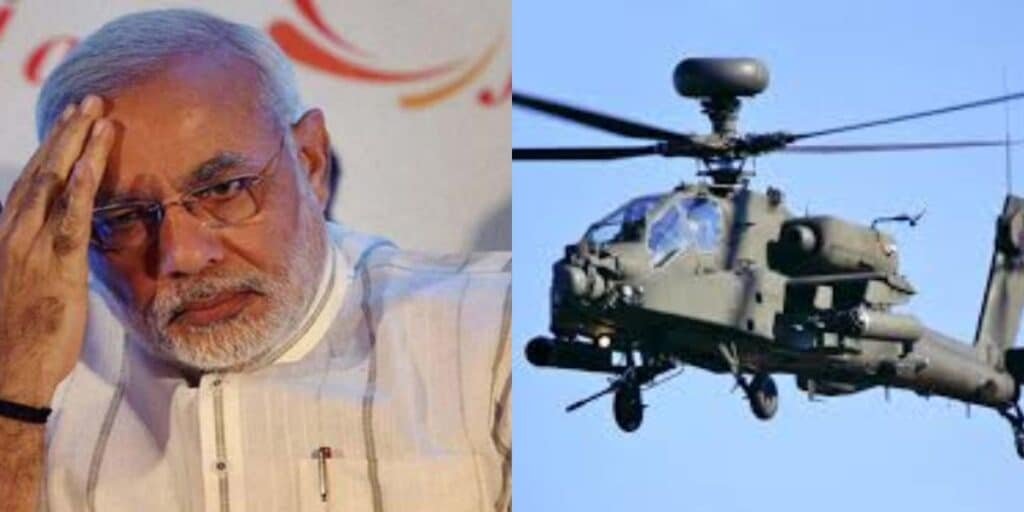WEBDESK: Despite their fearsome reputation, India’s AH-64E Apache helicopters are unlikely to provide any real advantage in a potential conflict with Pakistan. Defence experts are rejecting claims that these helicopters pose a strategic threat, especially given their limited number and Pakistan’s strong air defence systems.
India currently operates around 30 Apache helicopters. While these may be high-tech machines, analysts say they are “limited in numbers and ineffective” in the wider context of a full-scale war between Pakistan and India.
Indian Apache Hype Crumbles in Face of Pakistan’s Air Defence
According to defence specialists, Pakistan has built a layered and highly effective air defence system. It includes Chinese-made LY-80 medium-range missiles, FM-90 short-range units, Shorads, and locally-produced Anza MANPADS portable systems designed to target low-flying aircraft like helicopters.
This network creates a dangerous no-fly zone for Indian Apaches, especially near the Line of Control (LoC) and the international border.
Experts say Apaches require air superiority to be effective. But Pakistan’s radar systems and rapid air force response deny India the air space needed for such helicopters to operate freely.
The Pakistan Air Force (PAF) is equipped with advanced early warning aircraft such as the ZDK-03 from China and the Swedish Erieye AWACS. These systems provide round-the-clock air surveillance, allowing Pakistan to detect Apache movements early and launch swift countermeasures.
Indian Apache Trapped by Terrain: Pakistan’s Geography Gives it the Upper Hand
Pakistan’s border regions with rivers, forests, and civilian zones restrict Apache movement and offer cover for anti helicopter ambush teams. These areas are far more suited to Pakistan’s defence tactics than India’s offensive helicopters.
Pakistan also has its own anti-tank helicopters and modern anti-tank guided missile (ATGM) systems. These weapons can take down Apaches before they even reach their targets.
Pakistan’s Electronic Warfare Turns Apaches into Easy Targets
Another key vulnerability of the Apache is its reliance on complex electronics. Pakistan has developed strong electronic warfare (EW) capabilities, which can jam or disrupt the Apaches’ communications, targeting systems, and data links.
Analysts argue that India’s dependence on a few expensive platforms is no match for Pakistan’s mobile and layered defence strategy. In such a setup, slow-moving, high-value targets like Apaches are easy to hit and hard to protect.
Lessons from Afghanistan
Even in low-tech battle zones like Afghanistan, Apaches did not perform flawlessly. During US missions, 10 to 12 Apache helicopters were destroyed by basic weapons like RPGs and small arms fire. This shows how vulnerable they are, even against less sophisticated enemies.
In a modern and radar-heavy environment like Pakistan’s, expecting Apache helicopters to survive is far from reality. Experts say that in this region, the Apache is not a hunter it’s the hunted.
Despite aggressive military narratives from New Delhi, defence analysts agree: wars are not won by owning advanced weapons alone. Success depends on how well those systems are integrated into a broader, well-prepared strategy. And in that regard, Pakistan holds the upper hand with a stronger defence network, better preparation, and smarter deployment.
Read more: Operation Mahadev: convenient timing raises eyebrows amid parliament heat





